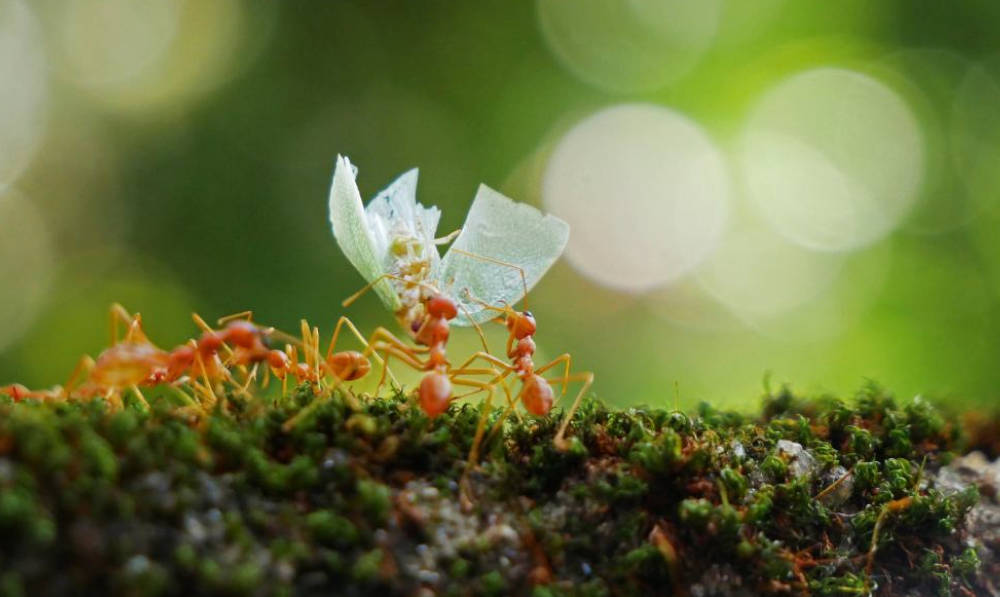KEY TAKEAWAYS:
Maintain Garden Hygiene: Regularly remove organic debris to eliminate ant attractants and discourage nesting in your garden.
Seal Entry Points: Close off cracks and gaps to prevent ants from accessing your plants, creating a physical barrier around your garden.
Natural Repellents: Utilize cinnamon, pepper, or ant-repelling herbs like mint and lavender to deter ants with strong scents.
Diatomaceous Earth: Apply this natural, non-toxic substance around plant bases and ant trails to dehydrate and control ant populations.
Regular Maintenance: Stay vigilant, inspect your plants often, and take prompt action against ant infestations to minimize damage and keep your green spaces healthy.
While ants are generally considered beneficial for the ecosystem, they can wreak havoc on gardens and lawns.
The can cause damage to plants and undermining the health of the landscape. Fortunately, there are effective strategies to protect your green spaces from ant damage without resorting to harsh chemicals or harmful methods.
Understand the Ants
Before delving into methods to protect your garden and lawn, it’s crucial to understand the behavior of ants. Ants are highly organized insects that work collectively in colonies, often establishing their nests near or within gardens and lawns.
They are attracted to sugary substances, plant debris, and aphids, making your garden an inviting environment for them to forage and establish their presence.
Identify Signs of Ant Damage
Recognizing the signs of ant damage is the first step in addressing the issue. Some common indications of ant damage in gardens and lawns include:
Visible Ant Trails: If you notice lines of ants traveling to and from your garden or lawn, it’s a clear sign of their presence.
Disturbed Soil: Ants create tunnels and nests in the soil, leading to disturbed and uneven patches in your lawn or garden beds.
Damaged Plants: Ants can damage plants by feeding on seeds, chewing through roots, or farming aphids, which can weaken the plants and inhibit their growth.
Anthills: The presence of anthills, especially near garden beds or on the lawn, indicates an established ant colony.
Now, let’s explore some effective strategies to protect your gardens and lawns from ant damage:
Maintain Garden Hygiene
Keeping your garden clean and free of debris is essential for deterring ants. Remove fallen leaves, dead plant matter, and other organic debris regularly.
Ants are attracted to decaying organic matter, so eliminating their food source can discourage them from nesting in your garden.
Seal Entry Points
Inspect your garden for potential entry points that ants might use to access your plants. Seal cracks in walls, gaps in windows, and any other openings that could serve as entry points for ants.
Creating a physical barrier around your garden can help prevent ants getting into your kitchen and living spaces.
Natural Repellents
Several natural substances act as effective ant repellents. Sprinkling cinnamon, black pepper, or cayenne pepper around the perimeter of your garden can deter ants due to their strong scent.
Planting ant-repelling herbs such as mint, lavender, or tansy around your garden beds can help keep ants at bay.
Use Diatomaceous Earth
Diatomaceous earth is a natural, non-toxic substance that can effectively control ant populations in gardens and lawns. Sprinkle a thin layer of diatomaceous earth around the base of plants and along ant trails.
When ants come into contact with diatomaceous earth, it dehydrates their exoskeletons, ultimately leading to their demise.
Employ Biological Controls
Introducing natural predators of ants can help keep their populations in check. Nematodes, for example, are microscopic organisms that feed on ant larvae in the soil, effectively reducing the ant population without harming other beneficial insects or plants.
Create Physical Barriers
Erecting physical barriers, such as ant traps or sticky barriers, around the perimeter of your garden can prevent ants from accessing your plants. Place ant traps strategically along ant trails or near anthills to intercept and eliminate them before they reach your garden beds.
Regular Maintenance
Consistent maintenance of your garden and lawn is key to preventing ant damage. Regularly inspect your plants for signs of ant activity and take prompt action if you notice any infestations.
By staying vigilant and addressing ant problems early on, you can minimize damage to your green spaces.

